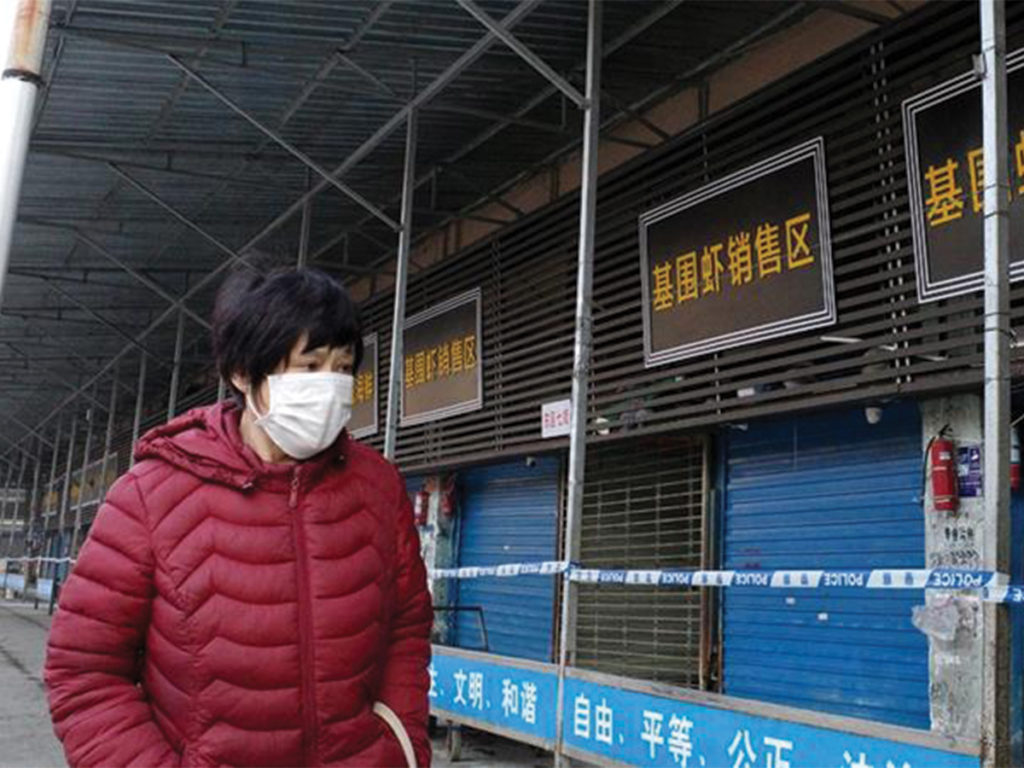
The 2019 novel coronavirus, or 2019-nCoV, spread throughout the Chinese city of Wuhan in December of 2019 in the form of a respiratory illness. The illnesses caused by the coronavirus range in severity, with some cases being as benign as the common cold, and others more extreme, resulting in pneumonia. It is important to note that though there are multiple 2019-nCoV cases throughout the world, it is not considered a “pandemic.” The World Health Organization classifies a pandemic as a viral influenza spread throughout the world, where both non-susceptible and susceptible groups are at risk for severe illness. In the case of the 2019-nCoV, the cases themselves are “spillover” from the disease’s epicenter, therefore making the outbreak an epidemic.
With the coronavirus outbreak being a topic of great interest, many media outlets have spread misinformation and enforce racial stereotypes, thus promoting fear. Fear mongering around illnesses is nothing new to the world of journalism, from the media coverage of the H1N1 influenza pandemic in 2009 — also known as “swine flu” — to the Ebola virus epidemic in 2014.
With few journalists coming from public health backgrounds and thus being unaware of epidemiological terms, the headlines and content of their articles unintentionally, and sometimes intentionally, perpetuate inaccurate narratives pertaining to the individuals impacted by disease. In the history of Western media, especially American and Western European media, coverage tends to fixate on the region of origin of epidemics, as well as the death toll due to these epidemics. As a result, the public instinctively tends to blame individuals from these impacted regions and are almost encouraged to engage in racial scapegoating.
One would only need to look to the Ebola outbreak in 2014, during which stigma toward the African diaspora strengthened to the point that many deemed it acceptable to actively engage in implicit racism. For example, a cover of Newsweek depicted a chimpanzee holding a sign with the headline: “A Back Door for Ebola: Smuggled Bush.” This not so subtle imagery furthers stereotypical racist depictions of African people that stems from scientific racism in the European “species classification” of humans during the 1800s, which was then popularized by the European press through caricatures and comics.
Similarly, fear mongering surrounding the coronavirus, perpetrated by the media and mainstream journalism, promotes xenophobia and racism toward East Asian communities. As of now there have been many instances of subtle and non-subtle xenophobia and racism within the realm of media coverage. The Economist, a reputable media outlet, wrote an article on the coronavirus and referred to it not only as the “Wuhan virus,” but as something that was “made in China,” and presents an image of a surgical mask with the Chinese flag covering the Earth on the front cover of the print magazine. A French newspaper’s front page headline read “New Yellow Peril?” above an article about the coronavirus, as well as with another headline: “Yellow Alert,” above an image of a Chinese woman wearing a surgical mask. The phrase “yellow peril” is racially charged, originating from anti-Asian sentiments during the first waves of East Asian immigration to the United States in the 19th century.
The outward usage of historically racist terminology as a means to “inform” and “encourage people to read more” is a prime example of predatory journalistic practices for the sake of article engagement and capitalizing off of vulnerable populations. With coronavirus memes circulating Twitter, Instagram and Facebook, many of these memes base themselves off of these problematic headlines and further anti-immigrant narratives. The media’s promotion of xenophobia creates an “echo chamber,” reinforcing and amplifying these beliefs repetitively within the multimedia realm. From memes promoting anti-Chinese international student sentiments to memes and tweets stereotyping Chinese cuisine, all of these play into furthering racist sentiments and anti-immigrant narratives.
Stigmatizing immigrants and the people impacted by illnesses is a prime example of victim blaming as well as an excuse to further xenophobia within a society that was built upon a foundation of prejudice and racism. Instead of focusing on the origin of the illness as well as the fatality count, media outlets should inform the public on what the illness truly entails, how at risk people are to catching the virus, how viruses are spread and how to promote proper hygiene practices. Additionally, health-related articles and journalism surrounding public health issues should be vetted by epidemiologists and public health officials in order to ensure accuracy of information as well as to formulate accurate headlines.
It is the media’s job to inform and educate the public with accurate information, and to ensure that article headlines and media coverage are not published with the intent to catch the eye of an already racist America and Western Europe.








